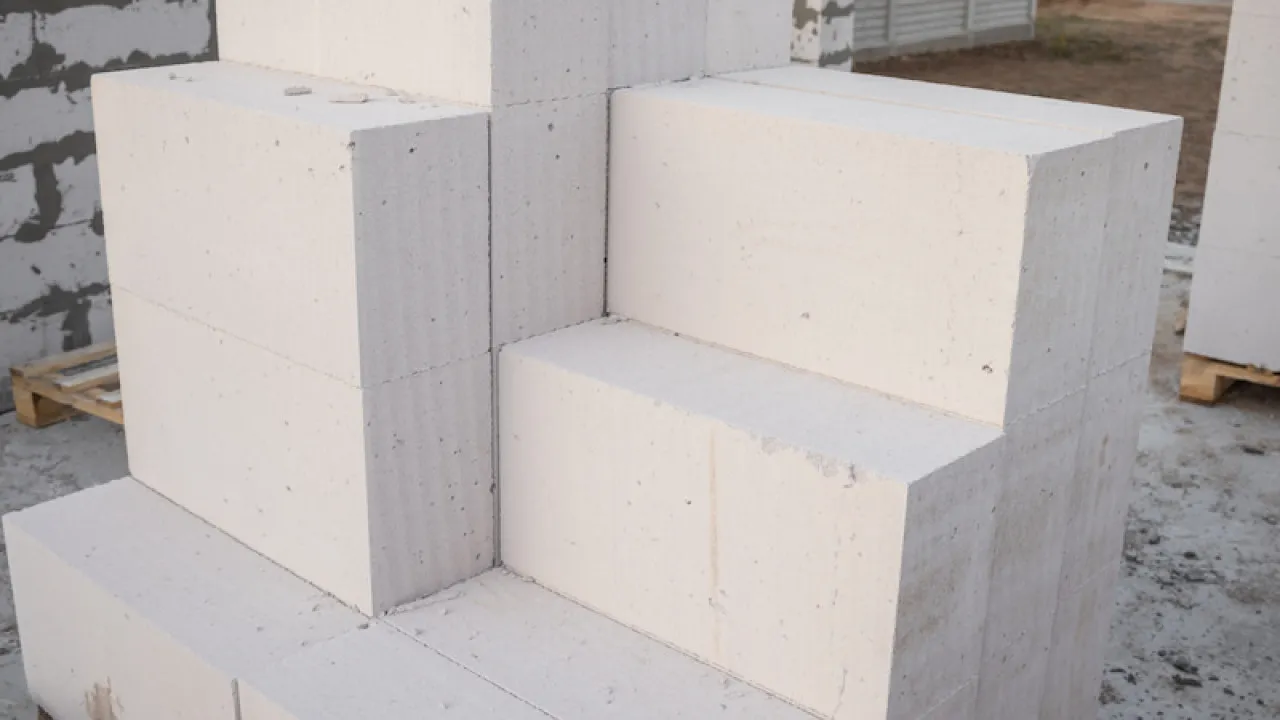Autoclaved Aerated Concrete (AAC) is an alternative to blocks, made of silica sand, cement, lime, gypsum, and aluminum paste. AACs are fireproof, waterproof, and easy to install. Before starting a construction project using AAC, you must know how many AACs per m2 to avoid shortages or excesses of building materials.
AACs are now widely used because they are more waterproof, easy to install, practical, and lighter than bricks. The size is also larger than the bricks, so you will need lesser AAC. To find out more about how to calculate the need for AACs per meter in construction, see the following article!
How to Calculate the Quantity of Autoclaved Aerated Concrete (AAC) Needed per Square Meter
Autoclaved Aerated Concrete (AAC) is made of silica sand, cement, lime, gypsum, and aluminum paste. The aluminum paste material will form air bubbles in the mixture, making AAC lighter and heat resistant.
If you are considering using AAC in a construction project, you can start planning and calculating the need for the bricks. Here is how to measure AAC needs per m2.
1. Measuring the Room
First, you must measure the length and the width of the room. You can do a thorough measurement for each room to be built with AAC by using measuring tape. The purpose of the measurement is to find out the length of each area where AAC will be installed and to ensure that each room dimension has an accurate size.
2. Calculating the Wall Area
After measuring the area, you need to calculate the wall area using the rectangle formula. However, you must first determine how high the building you want to build.
In general, the height of a building from the floor to the ceiling in a regular house is around 2.7–3 meters. Meanwhile, large buildings, such as warehouses or luxury homes, usually have a height of around 3–4 meters. Yet, you can still adjust the height of the building according to your wishes and needs.
Once you have the desired number, you can calculate the wall area using the formula below:
Wall area = The length x the height
For example, you want to make a wall of 7 meters in length and 3 meters in height. Thus, the calculation will be as follows:
Wall area = The length x the height
= 3 x 7
= 21 m2
3. Calculating the AAC Needs
When you figured out the wall area, the next step is to calculate it using the following AAC needs formula:
AAC needs = Wall area : AAC area
AACs available on the market generally have standard sizes of 60 cm long and 20 cm wide with varying levels of thickness (between 7.5 cm and 15 cm). The thickness can be adjusted to the needs and structure of the building. Here is an example of how to calculate the need for AAC for a house:
If a wall is 7 meters long and 3 meters high, then its area is:
Wall area = The length x the height
= 7 x 3
= 21 m2
The size of one AAC is 60 cm x 20 cm and 0.6 m x 0.2 m if converted into meters, meaning that the area of one AAC is:
AAC area = The length of AAC x the width of AAC
= 0.6 x 0.2
= 0.12 m2
Next, the number of AACs you need is:
AAC needs = Wall area : AAC area
= 21 m2 : 0.12 m2
= 175 AACs
If you want to calculate how many AACs are needed per m2 for a wall, the calculation is as follows:
AAC needs = Wall area : AAC area
= 1 m2 : 1.2 m2
= 8.33 or 9
Read also: 11 Types of Cement and the Functions in the Construction
4. Calculating Spare AACs
After knowing the need for AACs per m2, you can add about 5–10% of AACs as a spare to anticipate a shortage of materials during construction or broken bricks. As a reference, you should prepare about 5-10% of the AACs needed. For example, if building a wall requires 175 AACs, then:
5% spare = 175 x 0.05 = 8.75 or 9 AACs
10% spare = 175 x 0.1 = 17.5 or 18 AACs
That way, you can add 9–18 AAC brick spares and buy a total of around 184-193 bricks just in case you need them during the construction.
5. Calculating Wall Plaster Needs
To produce neat and smooth walls, you need plaster layers for your AACs. Plastering is generally made from a mixture of cement, sand, and water. The need for plastering can be calculated by adding all the surface areas of AACs or the area of the wall you are making.
The thickness of the plaster is usually around 1–2 cm. You can calculate the volume of plaster needed and then estimate the amount of material to be purchased.
How to Buy Autoclaved Aerated Concrete Needs
Now that you already know how to calculate the AAC needs for a construction project, it's time to learn tips on buying lightweight bricks. Several aspects need to be considered, including:
- Choose a quality brick that is sturdy, has a smooth surface, and is not cracked.
- Make sure the size of the brick is following the calculations you have made.
- Pay attention to the adhesive or plaster of the brick.
- Compare prices from various suppliers to get the best price but still quality.
- Consider the shipping costs from the shop.
- Make sure the number of bricks ordered follows the stock owned by the seller so that delivery is carried out on time.
That was all the information about how to measure AAC needs for each square meter to avoid waste. With the right calculations, you can optimize the use of materials and save costs. In addition to considering the numbers, you must also ensure the material quality, such as the bricks and the cement mortar used. For that, choose only high-quality cement such as Semen Merah Putih Watershield.
Semen Merah Putih Watershield is a super premium multipurpose cement with many advantages over ordinary cement. Hence, it is very suitable for all building applications, such as foundations, concrete roofs, castings, brickwork, plastering, and plastering.
In addition, Semen Merah Putih Watershield also has Water Repellent Technology which provides Triple Protection for your building, namely protection against seepage from 3 sources (outside, inside, and from the ground), making the building strong, more durable, and requires minimal maintenance.
Want to know more information about other Semen Merah Putih products? Contact us and find the best solution for building your dream home!
Read also: Precast Concrete: Definition, Functions, and Types



